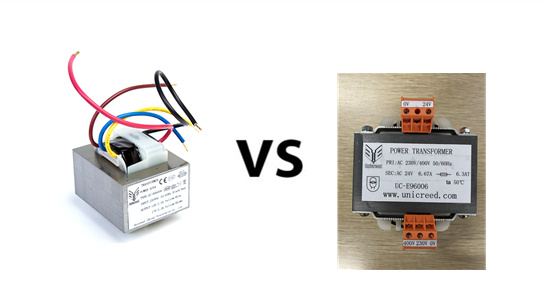With the rapid development of isolation transformer production technology over the past few years, its excellent product performance has been used in more and more fields and ranges as well. With the increasing recognition of isolation transformers’ advantages, ordinary transformers may gradually be replaced by isolation transformers. What’s the difference between isolation transformer and standard transformer?
Isolation transformers differ from standard transformers in the following ways:
Standard transformers (including non-isolated transformers) are designed to change voltage, which can be divided into step-down transformers and step-up transformers, with different numbers of turns in the primary and secondary coils. In some transformers, such as auto transformers, the primary and secondary sides are not isolated.
Isolation transformers function primarily by electrically isolating the primary and secondary windings. Therefore, it is extremely important to ensure that the primary and secondary windings are adequately insulated. Isolation transformers do not perform transformations, i.e., the number of turns of the primary and secondary windings are equal. As an example, the pulse transformer used in the thyristor DC speed control system prevents the high voltage from invading the pulse numerical control device.
The following are the special features of the isolation transformer:
- There is a grounding in the primary and an ungrounding in the secondary;
- The primary and secondary wire packages are separated by an isolation layer. As this isolation layer is connected to the primary ground terminal, the secondary terminal is isolated from both the power grid and the electrostatic field.
The main difference between isolation transformer and standard transformer as follow:
1.There are different main tasks to be performed:
Standard transformers are used for changing voltage, and they are divided into step-down transformers and step-up transformers, whose primary and secondary coils differ in number of turns. Transformers are not always isolation transformers. For example, auto transformers are not isolated from both primary and secondary sides.
2.There is a difference in definitions:
An isolation transformer separates the primary and secondary coils of a DC circuit. DC circuits with isolation transformers have separate primary and secondary coils. Transformers used in machine tools and equipment control circuits generally change high voltages into low voltages. Transformers that convert high voltage to low voltage are usually used in control circuits of machine tool equipment.
3.There is a difference in usage:
In isolation transformers, the power supply and load are isolated from each other, so that there is no direct electrical connection between them. It is commonly used in low-voltage instruments and experiments. Standard transformer controls the voltage and current required by electrical equipment within a specified range.
Isolation transformers perform the following functions:
- Through the isolation transformer of the wiring, it can prevent the transmission of part of the harmonics;
- Increasing the system impedance, which facilitates communication with protection devices;
- Stabilizing the system voltage, for example, by reducing the impact on the system voltage when starting heavy-load equipment;
- Prevents system grounding: When single-phase grounding occurs on the load side of the isolation transformer, it will not result in single-phase grounding of the entire system (the part above the isolation transformer);
- Limit the short-circuit current of the system when a short-circuit accident occurs on the load side;
The application of isolation transformers
With its extremely high safety performance and high resistance, the isolation transformer is a transformer with strong stability and high reliability. Additionally, it protects the personal safety of users as well as the safety of equipment. There are many uses for isolation transformers in the electronic industry, the industrial and mining sector, machine tool control power supply, and safety lighting, among others. Medical devices and household appliances also benefit from this technology.There are some similarities between the hospital’s IT power supply system and its isolation transformer. Manufacturers are also paying more attention to the production of isolation transformers, which will gradually reduce noise, reduce energy consumption, increase efficiency, and be more environmentally friendly in the future.



